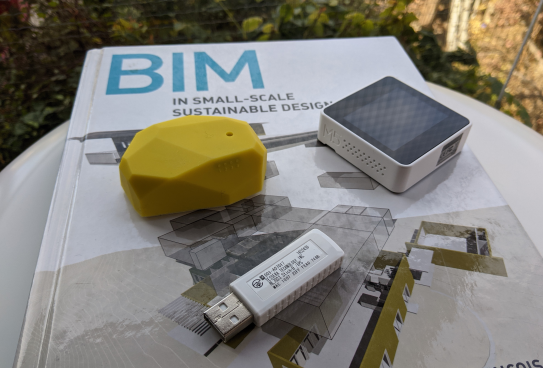It's been decades that we talk about Smart Home and more generally Smart Buildings, but adoption still seems limited. IoT and robotics being in the spotlight these days, can we expect more adoption soon?

Let's check some of the challenges for smart home/ building services, and what progress have been made on solving them in the last ~20 years.
I think the main challenges have been: deployment, configuration, reliability, privacy, interfaces and the value added of services. We will define Smart Building services as services relying on sensors and electronically controlled actuators to improve the living environment.
Deployment
When a building was not designed from start to accommodate such as system, deployment of devices tends to be challenging.Power, communication and a physical substrate need to be provided. It impacts the service layer (access to energy, network...) and potentially the space plan (availability of installation spots compatible with the device role and space design) of the building (see Steward Brand's 6S, How Buildings Learn)
=> Lots of progress have been made on this front:
- low power wireless networks are now mature (echonet ,BLE...)
- low power device on batteries, use of PoE, or smart fixtures attachment (on light bulbs...) solve or mitigate the power access issue.
- sim cards for m2m applications are now easily available
The availability of SoC like the ESP32 integrating low power wireless and deep sleep modes in parallel to the improvements in batteries will provide some marginal gains on the power aspect.
Configuration:
It includes network configuration, location configuration, device relation to each other and to the services to be provided (User interfaces).
=> This is still laborious but many improvements have been made
- network configuration with wps like technology
- device registration with smartphones and QR codes
- drag and drop interfaces to configure devices locations and services.
- cloud device management is now a reality
A related aspect is calibration: sensors have different placement, different response curves that may vary with time... This means that we ideally want some form of calibration. I think that this is being solved with Machine Learning and better interfaces for human control (like Nest thermostat). But more can be done
Reliability
Most systems currently rely on some central hub that can become a single point of failure. This is even more true when the service logic depends on a cloud service: internet or server outages can render the service unusable (Nest...). =>We will need more distributed solutions. ZigBee and some other protocols are providing network level services but are limited.
Privacy and security
Privacy is an important concern as sensors within the built environment may gather sensitive information.
=> Current trend have rather exacerbated the problem:
- voice interface enabled smart home hubs are gathering more sensitive information
- progress in AI make the use of cameras more attractive for service developers, while they are one of the worst sensor type for privacy
- The most positive aspect is the improvements in embedded data processing make data desensitization possible.
Interfaces
Interfacing with smart building system is key for configuration, control and diagnosis. It used to be dedicated display with rather cumbersome UIs but much progress has been made.
- The ubiquity of smartphones make them the ideal interface to these systems. They are almost always nearby the user so more convenient than dedicated remote controllers or fixed displays
- Voice interfaces are now relatively performant, although they pose privacy issues and can be inconvenient in certain situations.
- smartwatches proved a convenient extension of smartphones capabilities
- smartphones also provide context awareness which can dramatically improve UIs
This is probably the area where most progress has been made.
Value of services
10 years ago the value of services provided by smart buildings (you can close your blinds automatically!) seemed quite low compared to the overall cost (including non monetary costs like configuration...). It was hoped that system standardization coupled with opening the service ecosystem with app stores would bring value, but it didn't really happen. I think the first really successful consumer product in the field was the Nest thermostat because it removed almost all the costs while providing a clear service. But since then no other winner appeared.
Entertainment services have been available for some time, coupled with dlna for content diffusion. It probably needs more context awareness be more valuable ,but this could add privacy costs.
Energy services: until recently energy has been really cheap in countries like Japan or France, which limits the value of energy savings that could be made using smart building technology. But if we take for example the extreme prices of electricity of winter 2020/2021 (due to LNG procurement issues) which brought price per kwh to 20 times the average in Japan, then the benefits of savings become tremendous. And even more if saving energy means the difference between some energy or no energy(due to blackouts).
Finally population aging and decrease may contribute to create value in care services. While robots and sensors cannot fully replace humans, if we can relieve some burden and let human focus on care and empathy this could be a win. It still difficult but some companies like Carepredict are making good progress.
Conclusion
A lot of progress has been made along the progress of smartphones and cloud services. In particular interfaces and configuration have improved. However major issues remain related to privacy, reliability and value of services. I think machine learning has a key role to play on these aspects, but a lot of the incentive will also come from the changes in society.